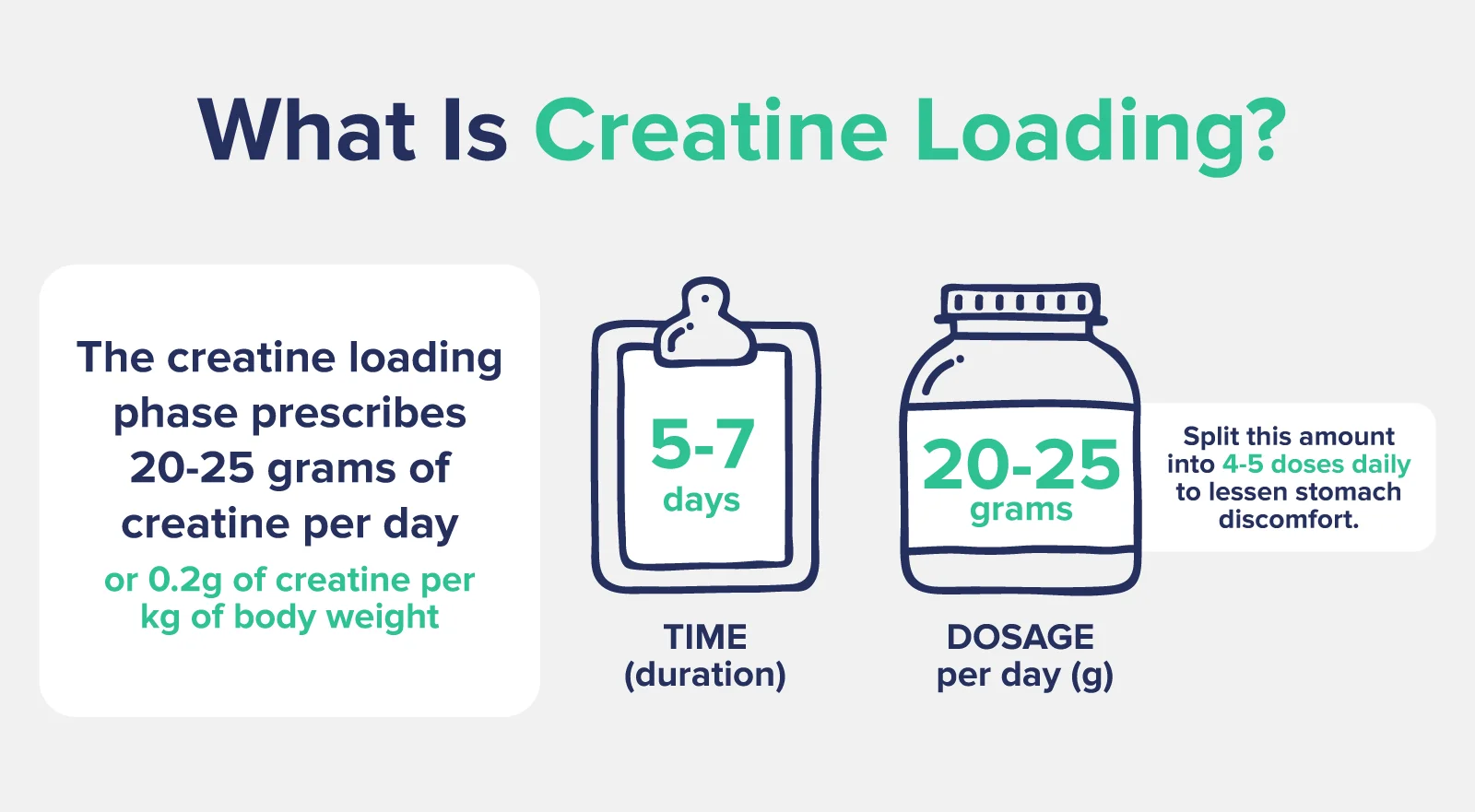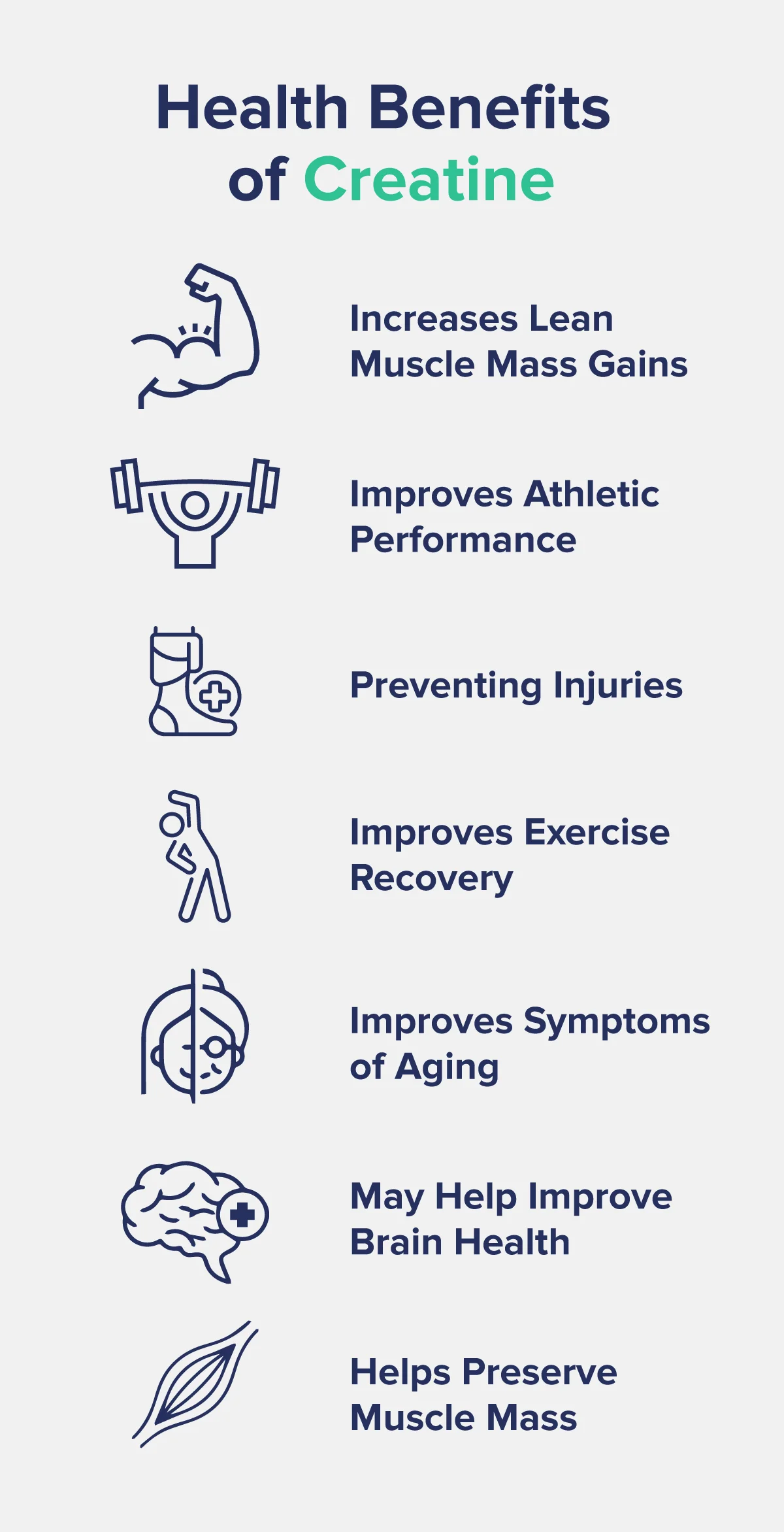Try our favorite, clean protein powder: See our top pick →
Try our favorite, clean protein powder: See our top pick →
This post contains links through which we may earn a small commission should you make a purchase from a brand. This in no way affects our ability to objectively critique the products and brands we review.
Evidence Based Research To fulfill our commitment to bringing our audience accurate and insightful content, our expert writers and medical reviewers rely on carefully curated research.
Read Our Editorial Policy
When it comes to sports nutrition, there sure is a lot of bunk out there to wade through.
However, one supplement you can lean on as a tried and true method to improve exercise performance and build bigger muscles in the gym is creatine monohydrate.
If you’ve been looking into taking creatine, you’ve probably heard the term “creatine loading” either online or directly from the directions on your bottle of creatine.
But what exactly is creatine loading, and what are the benefits? We’ve got all the info below and more.
The creatine loading phase dosing strategy prescribes 20-25 grams of creatine per day (or 0.2g of creatine per kg of body weight) for 5-7 days.
This amount is spread out in 4-5 doses taken throughout the day to reduce the potential for stomach and digestive discomfort.
This loading phase is then followed by the maintenance dose phase of 5-7g of creatine per day.
Yup. That’s all there is to it! Creatine loading isn’t complicated.

Honestly, the hardest part is probably remembering to take multiple doses a day.
If you miss a dose, don’t worry too much. You can add a bit more to one of your doses the same day if you aren’t experiencing any discomfort.
If you miss a day, just tack on an extra day to your creatine loading phase.
Do you have to do a creatine loading phase? No. You can 100% jump into the maintenance dose phase—especially if you’re not looking for quick results and plan to take creatine long-term.
However, there are some benefits to creatine loading that you may want to consider.
With the creatine loading phase dosing strategy, you can increase your muscle creatine stores more quickly and reduce the amount of time it takes to see results.
Many studies demonstrate improved athletic performance, increased muscle gains and strength, and improved recovery time in just one to two weeks.
This study even demonstrated an increase in exercise performance capacity of 5–10% in just the first 5-7 days.
However, if you do creatine loading, you may also see side effects such as water retention, stomach discomfort, and increased body weight.
However, these are not symptoms to be worried about. Your muscle cells are simply holding onto more water, which is a good thing since this will make them appear larger.
If you are experiencing digestive issues, you can decrease the amount of creatine you are taking per day if the symptoms are unmanageable.
When using the creatine loading dosing strategy, you can quickly increase your muscle creatine stores.
If you’re considering taking creatine supplements, you should consider some of the other benefits besides just the muscle gains (though that is a major perk!).
Creatine has the potential to improve your performance in the gym, decrease recovery time, improve brain health, and even reduce the risks of injuries.

Creatine is a proven and safe supplement for building bigger muscles and enhancing lean body mass, particularly in healthy young individuals.
Here’s how it works:
It also shows promise for injury prevention, but further research is needed, especially in older populations and those with muscular diseases.
Creatine provides cells with more energy by replenishing ATP (adenosine triphosphate), the energy currency of our cells. This leads to sustained energy levels during exercise, particularly high-intensity exercise. This results in performance benefits such as increased strength and power output, as demonstrated by studies on elite athletes, including elite Brazilian soccer players.
Studies suggest that creatine supplementation may reduce the risk of sports-related injuries, including cramping, dehydration, muscle tightness, strains, and various contact and non-contact injuries, particularly in college football players.
Creatine accelerates exercise recovery by promoting cell repair and growth, preserving lean tissue mass, and preventing the breakdown of muscle protein. It proves beneficial during immobilization due to injury or age-related decline.
Creatine supplementation exhibits potential in preventing sarcopenia and dynapenia, preserving and increasing muscle mass and strength in aging individuals. It also enhances bone mineral density and reduces the risk of falls, addressing various aspects of age-related decline.
In addition to physical benefits, creatine positively influences brain function and cognitive processing. It aids recovery from trauma, such as traumatic brain injury, by meeting the energy demands of brain cells. Long-term supplementation also has noticeable positive impacts on brain health and improves aspects of neurological diseases.
Since creatine prevents muscle protein breakdown, it may also help prevent muscle loss during what’s called the “cutting phase.” This is a dieting phase where individuals (both bodybuilders and “regular people” like us) are trying to cut down on fat while preserving muscle. During this phase, you will take in fewer calories to help slim down and lose fat, but this can also lead to unwanted losses in muscle mass. With the combination of creatine supplementation and a high-protein diet, you can not only improve your initial muscle growth but also preserve muscles during this phase of caloric restriction.
Creatine is most effectively taken through a loading phase, where you consume 20-25 grams per day (or 0.2g per kg of body weight) spread out in 4-5 doses a day for 5-7 days. Remember to spread out the doses throughout the day to minimize the risk of stomach discomfort. After the loading phase, a maintenance dose of 5-7g per day is recommended.
The recommended creatine loading phase typically involves 20-25 grams per day. While there’s some flexibility, starting with 10g might not provide the same benefits as the standard loading dose. It’s advisable to follow established guidelines for optimal results.
The creatine loading phase is typically followed for 5-7 days. After this period, you can transition to the maintenance dose of 5-7g per day. It’s essential to follow the recommended loading duration to effectively saturate your muscle creatine stores.
Missing a day during the loading phase isn’t a major concern. If you forget a dose, you can make it up by adding a bit more to one of your doses on the same day. If you miss a day entirely, consider extending the loading phase by an extra day. Consistency is key, but occasional lapses won’t significantly impact the overall effectiveness of creatine loading.
Subscribe now and never miss anything about the topics important to you and your health.